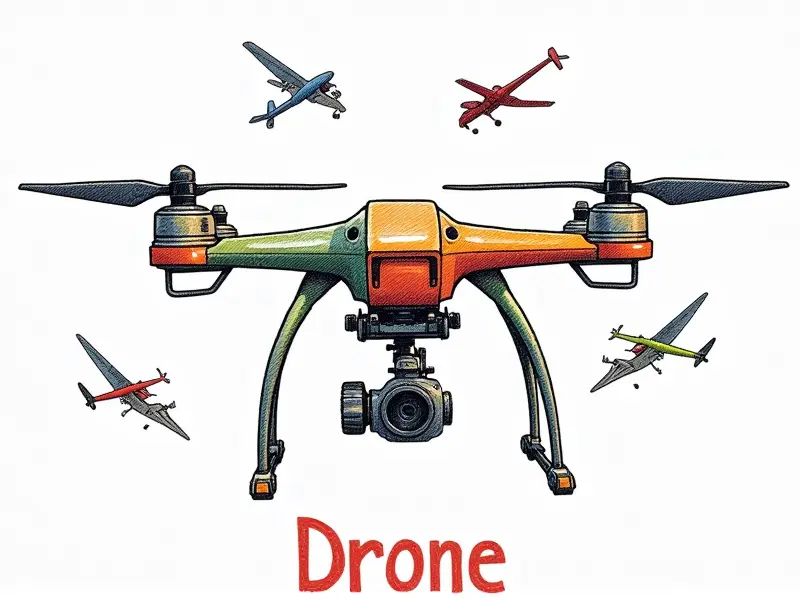Can RC quadcopters get wet?

Is It Safe to Fly RC Quadcopters in Wet Conditions?
Flying remote control (RC) quadcopters in wet conditions is a common concern among hobbyists and enthusiasts. While the thrill of flying your drone through rain or mist can be exhilarating, it's crucial to understand the risks involved. The primary question that arises is whether RC quadcopters are designed to handle moisture exposure.
Can RC Quadcopters Handle Rain?
The durability and water resistance of an RC quadcopter vary greatly depending on its design and intended use. Some high-end models come with waterproof or water-resistant features, making them suitable for light rain or even splashes. However, most standard consumer-grade drones are not designed to withstand prolonged exposure to moisture.
Flying RC Quadcopters in the Rain: Pros and Cons
- Pros:
- Unique aerial footage of wet landscapes or rain scenes.
- Potential for testing drone performance under extreme conditions.
- Cons:
- Risk of electrical damage due to water ingress.
- Possible corrosion and long-term degradation of components.
- Deterioration of flight performance and stability.
How Water Affects RC Quadcopter Performance
Water can significantly impact the performance of an RC quadcopter. Moisture entering the motors, electronics, or battery compartments can lead to short circuits, reduced lift capacity, and erratic flight behavior. Additionally, water droplets on propellers can cause imbalance and vibration issues.
The Impact of Moisture on RC Quadcopter Motors
Motors are particularly vulnerable to moisture damage. Water can seep into the motor windings or bearings, causing corrosion and increased resistance. This not only affects the motor's efficiency but also shortens its lifespan.
Surviving Wet Flights with RC Quadcopters
To minimize risks when flying in wet conditions, it’s essential to take preventive measures:
- Use Protective Covers: Apply waterproof covers or wraps to sensitive components like motors and electronics.
- Dry Out Components: After flights, thoroughly dry out the drone using compressed air or a hairdryer set on low heat.
- Regular Maintenance: Inspect and clean your quadcopter regularly to ensure all seals are intact and functioning properly.
Do RC Quadcopters Survive Water Exposure?
The survival rate of an RC quadcopter after water exposure depends on several factors, including the drone's design, the duration and intensity of moisture contact, and post-flight maintenance practices. While some drones may survive a light drizzle with minimal damage, prolonged exposure to heavy rain can lead to irreversible harm.
Is Your RC Quadcopter Ready for Wet Weather?
To determine if your quadcopter is prepared for wet conditions:
- Check Manufacturer Guidelines: Refer to the user manual or manufacturer's website for specific instructions on water resistance.
- Evaluate Design Features: Look for waterproof seals, protective coatings, and other moisture-resistant components.
Flying RC Quadcopters in Light Rain: Possible or Not?
Flying an RC quadcopter in light rain is possible but risky. If your drone has some level of water resistance, you might attempt a short flight to capture unique footage. However, it's crucial to monitor the weather closely and be prepared to land immediately if conditions worsen.
Can You Wash an RC Quadcopter?
Washing an RC quadcopter is generally not recommended unless explicitly stated by the manufacturer. Most drones are designed for dry environments, and exposure to water can lead to irreversible damage. If your drone gets dirty from dust or mud, use a soft cloth and mild cleaning solution instead.
How to Protect Your RC Quadcopter from Moisture
To safeguard your quadcopter against moisture:
- Use Waterproof Cases: Store the drone in waterproof cases when not in use.
- Apply Silicone Spray: Use a silicone-based spray to enhance water resistance on exposed components.
- Monitor Humidity Levels: Keep an eye on humidity levels and avoid flying if conditions are too damp.
Conclusion
Flying RC quadcopters in wet conditions can be tempting, but it's essential to weigh the risks against the benefits. While some high-end models offer water-resistant features, most consumer-grade drones are not designed for prolonged moisture exposure. By taking preventive measures and understanding your drone’s limitations, you can enjoy flying your quadcopter safely even in slightly damp environments.

